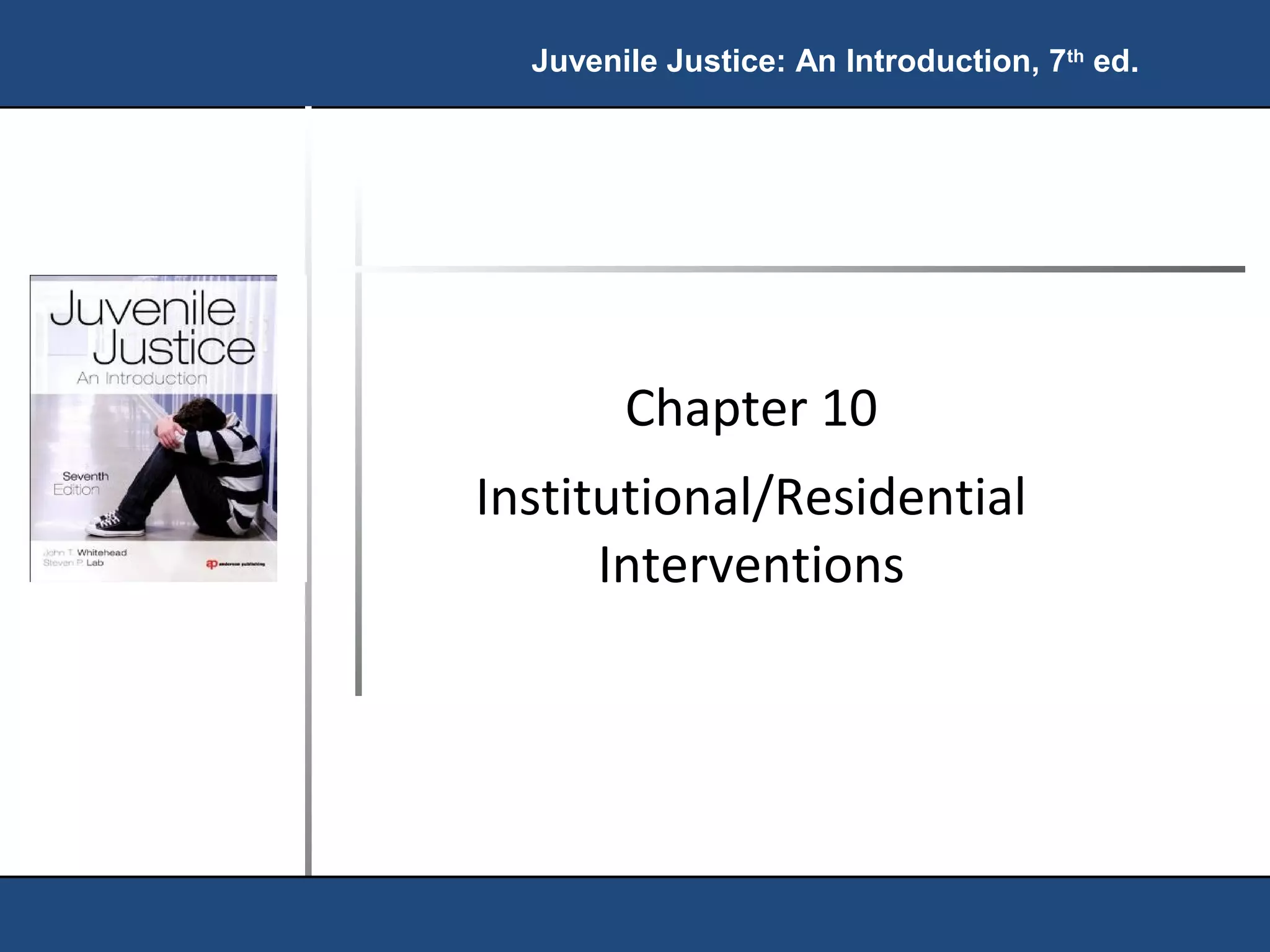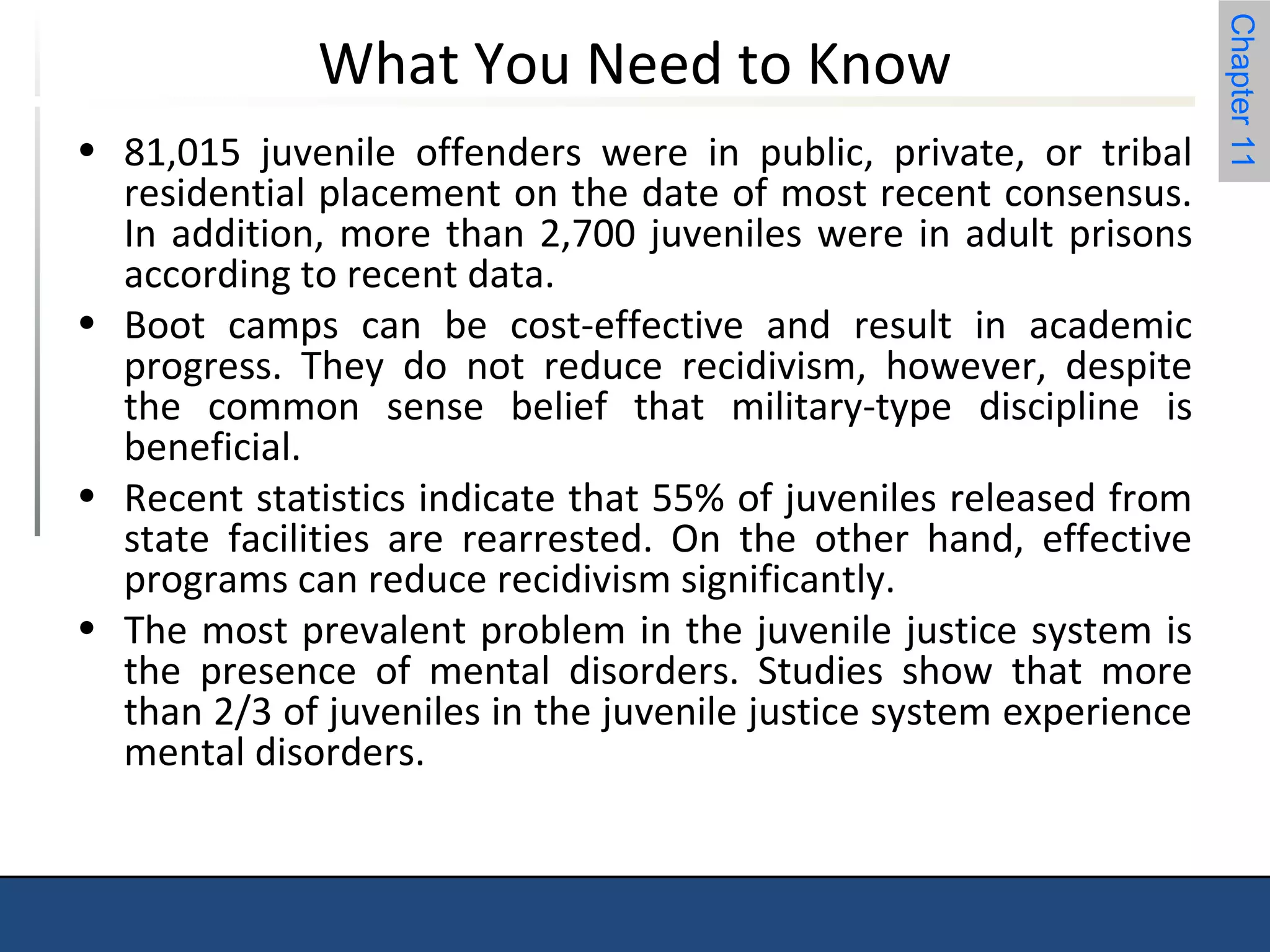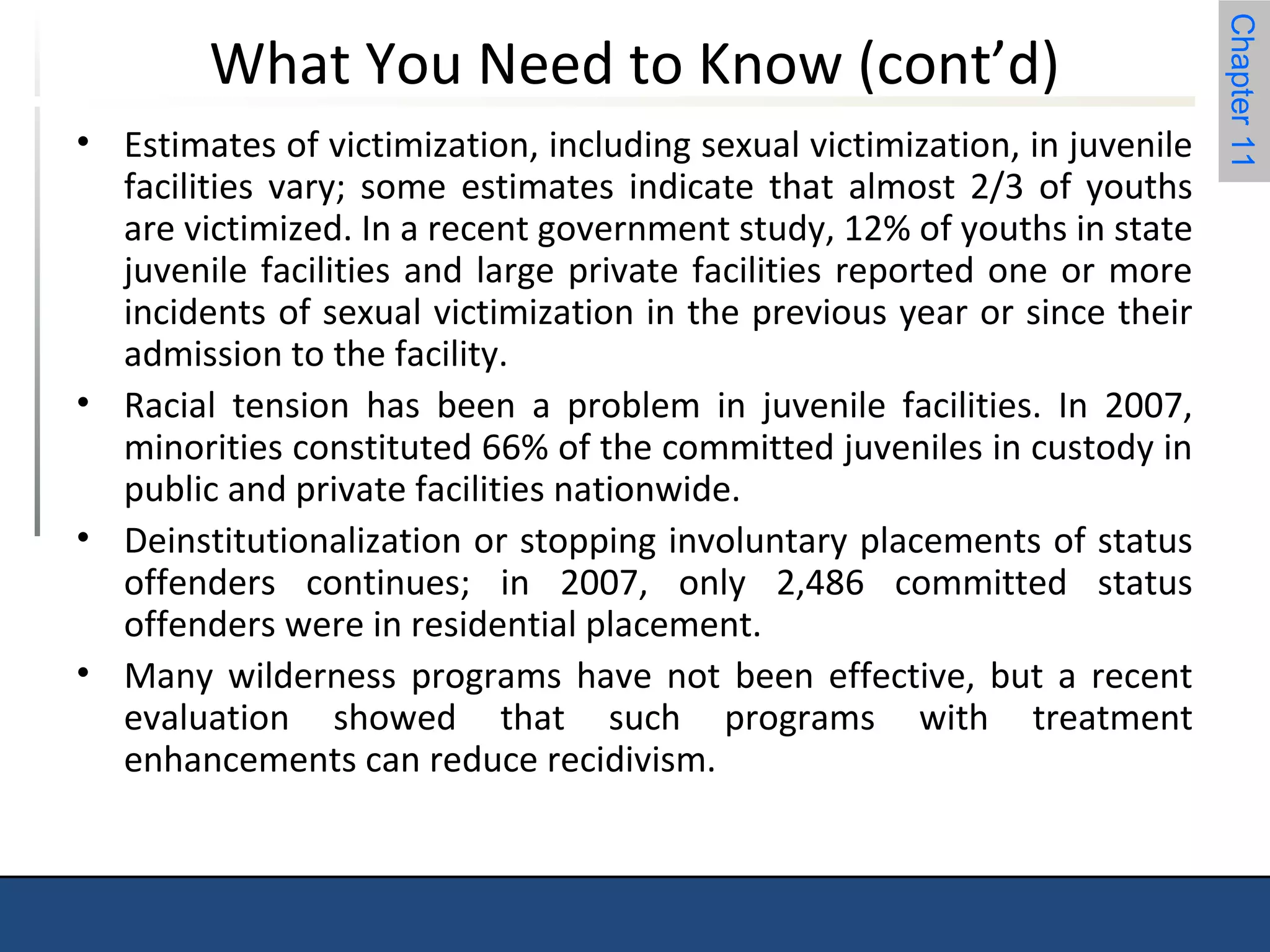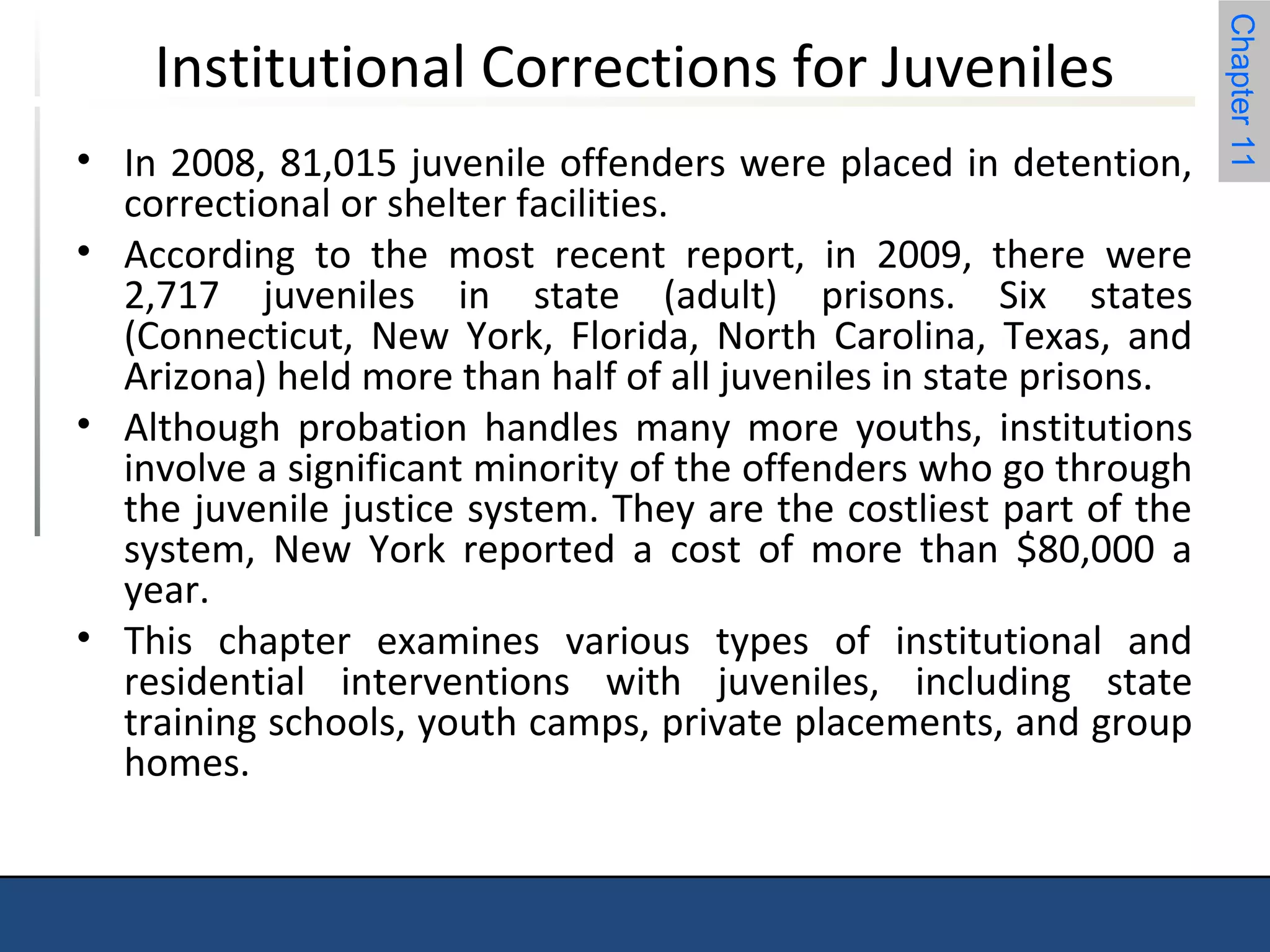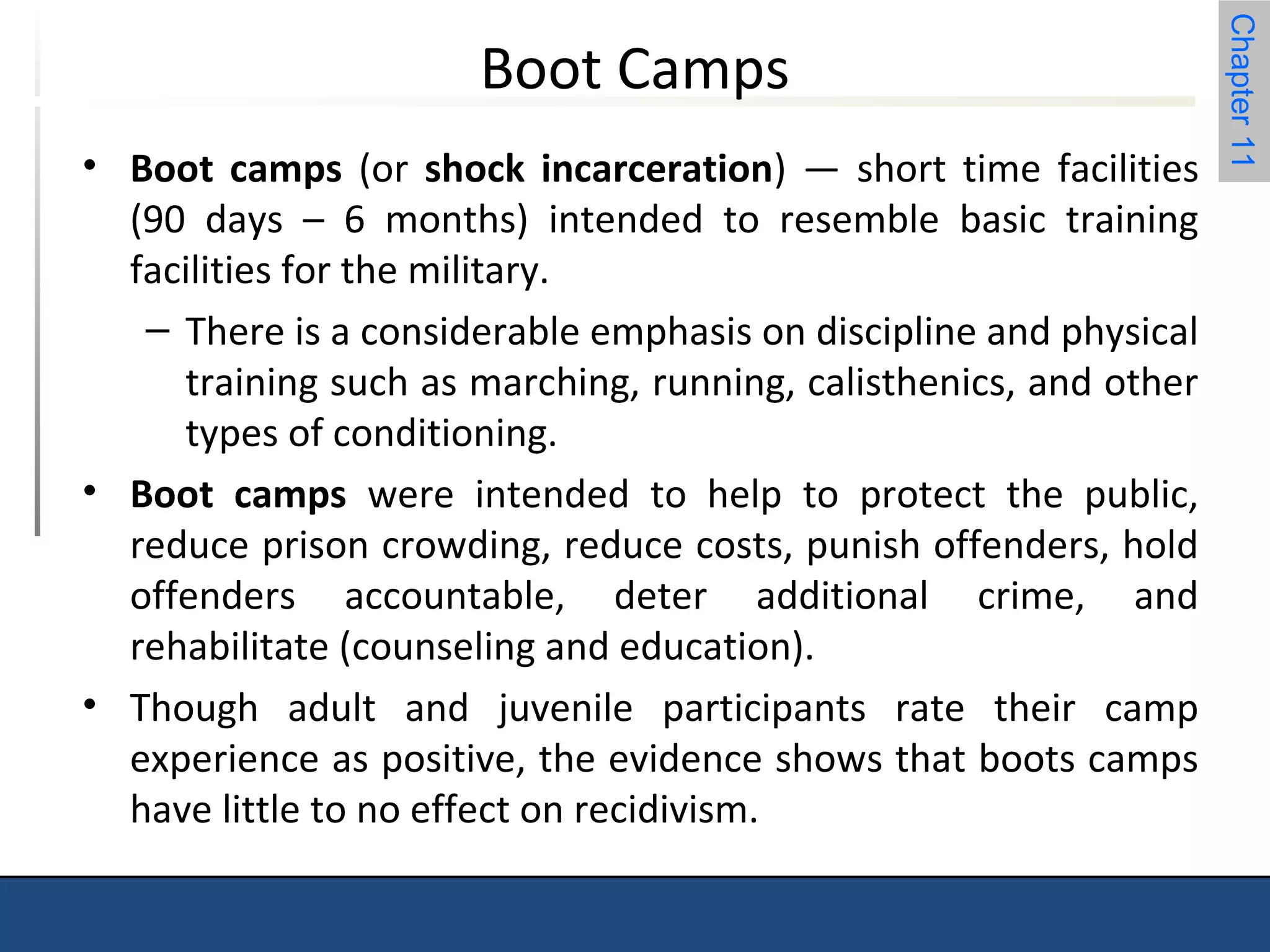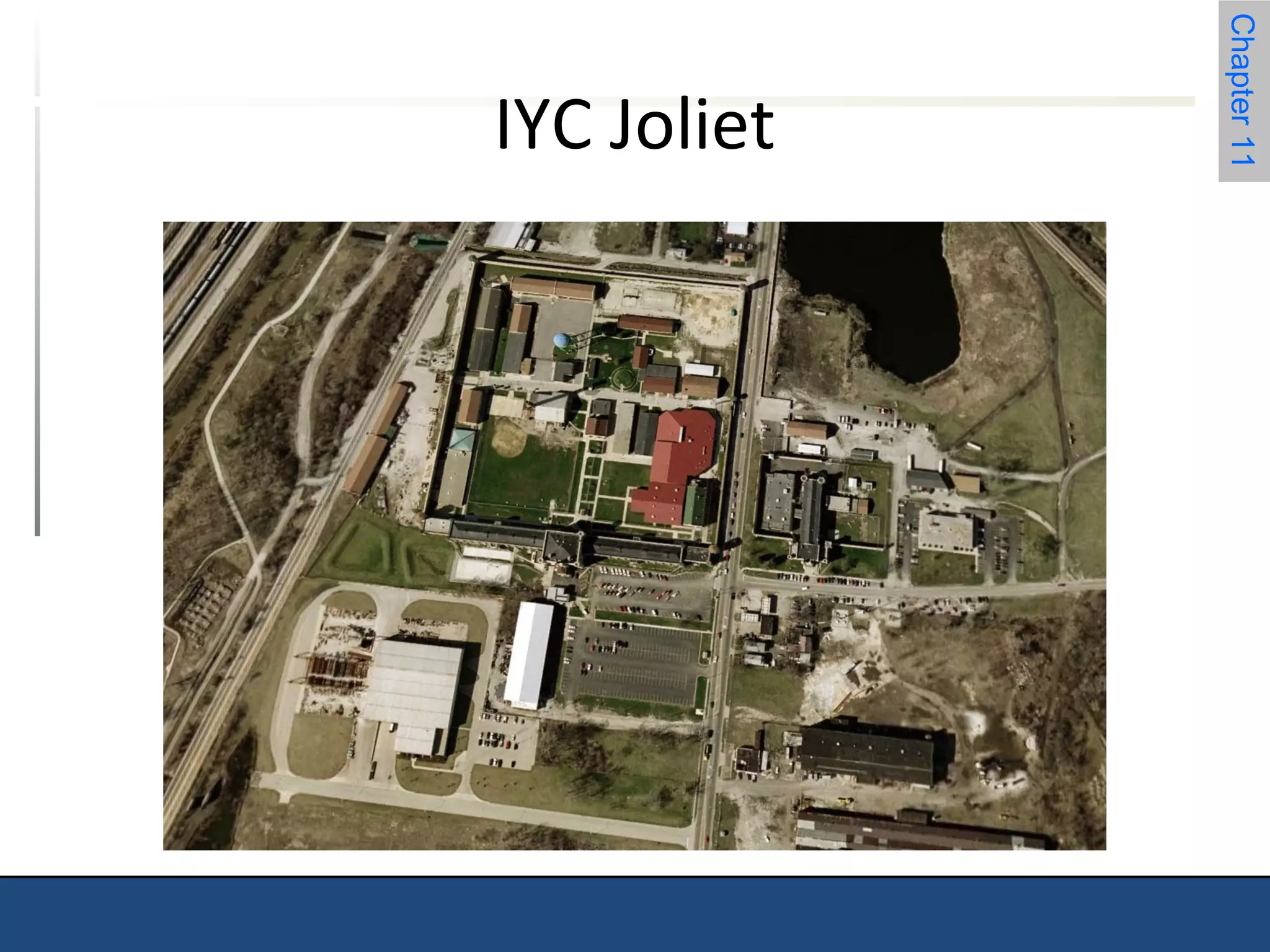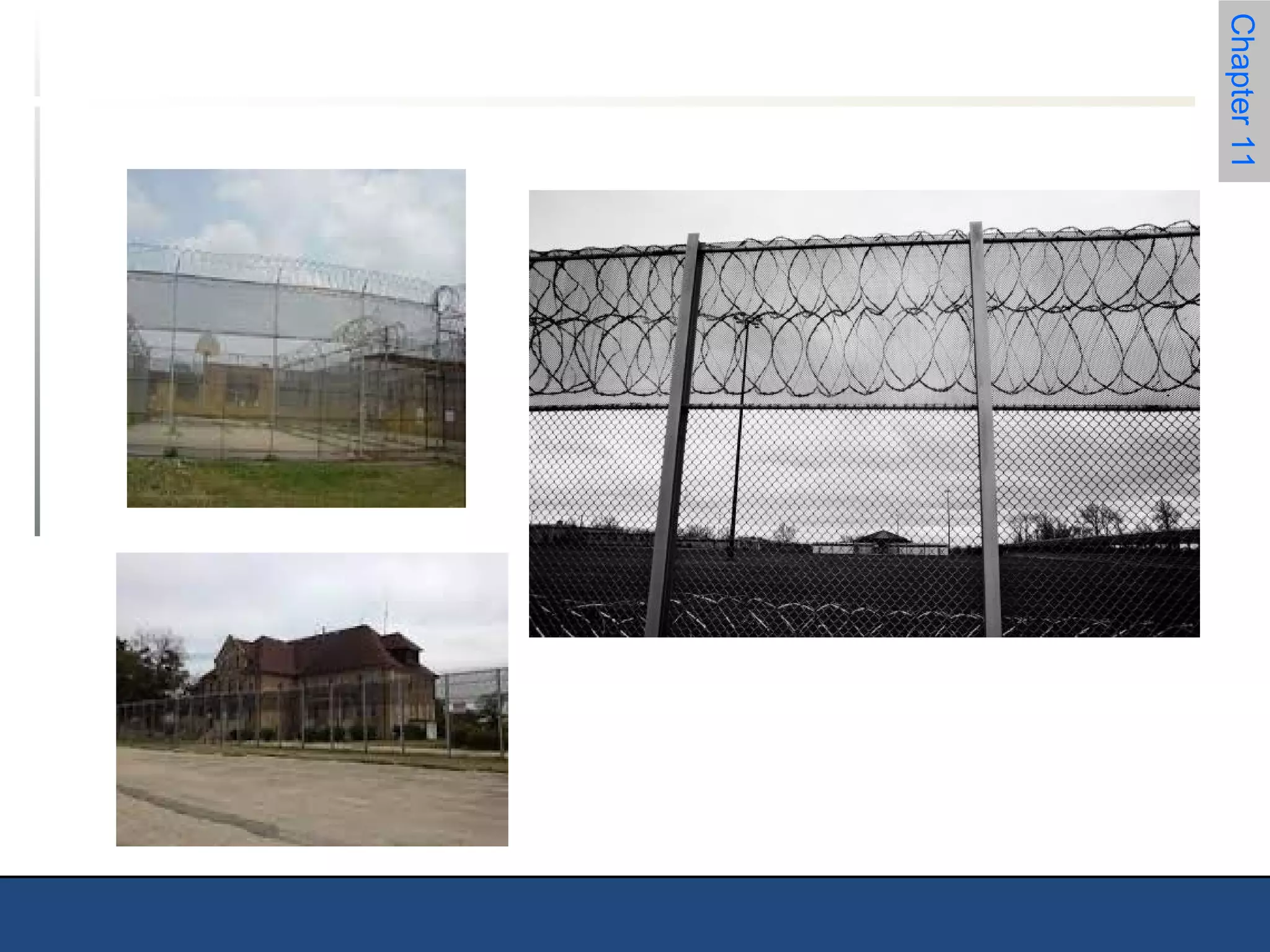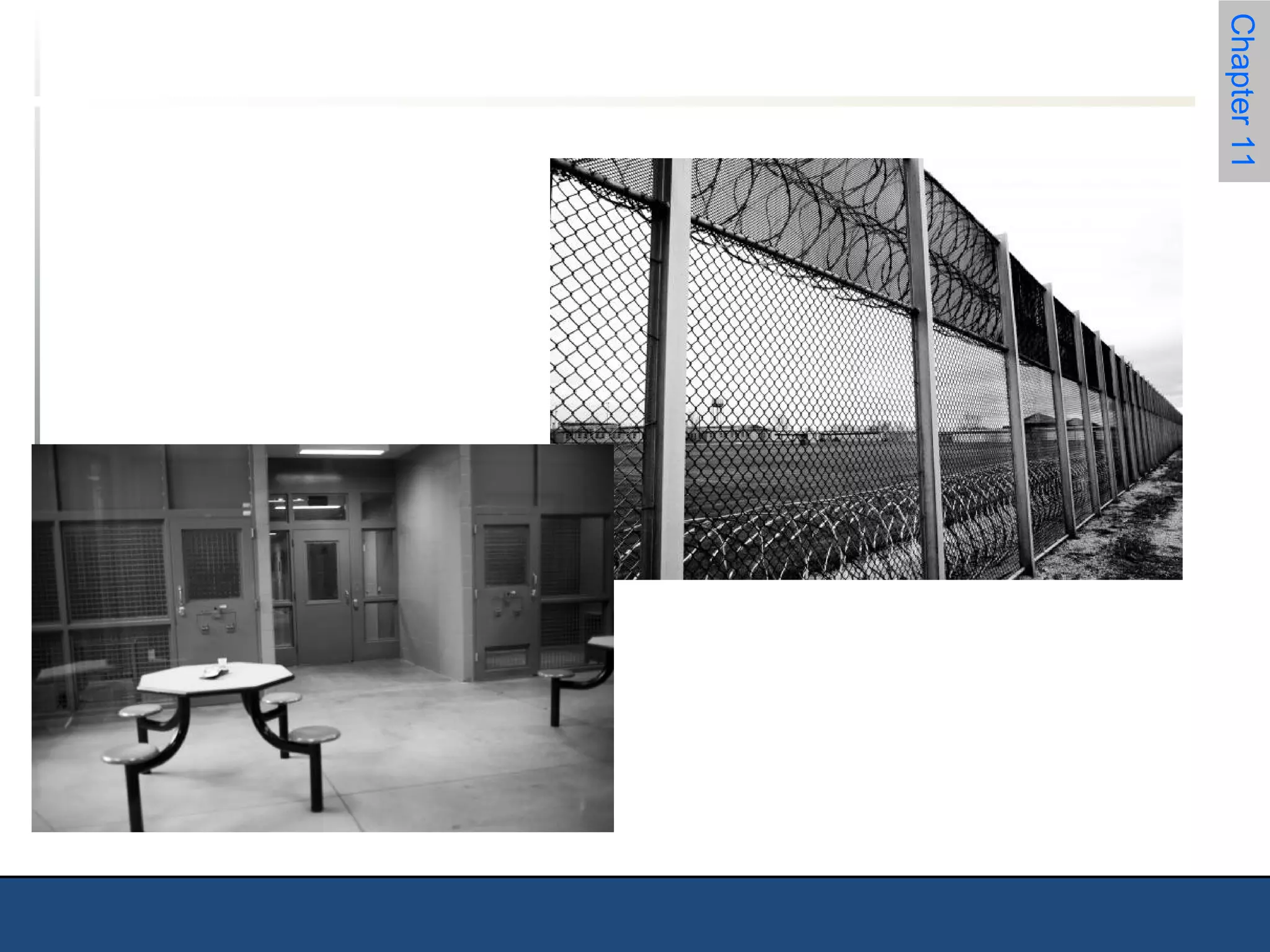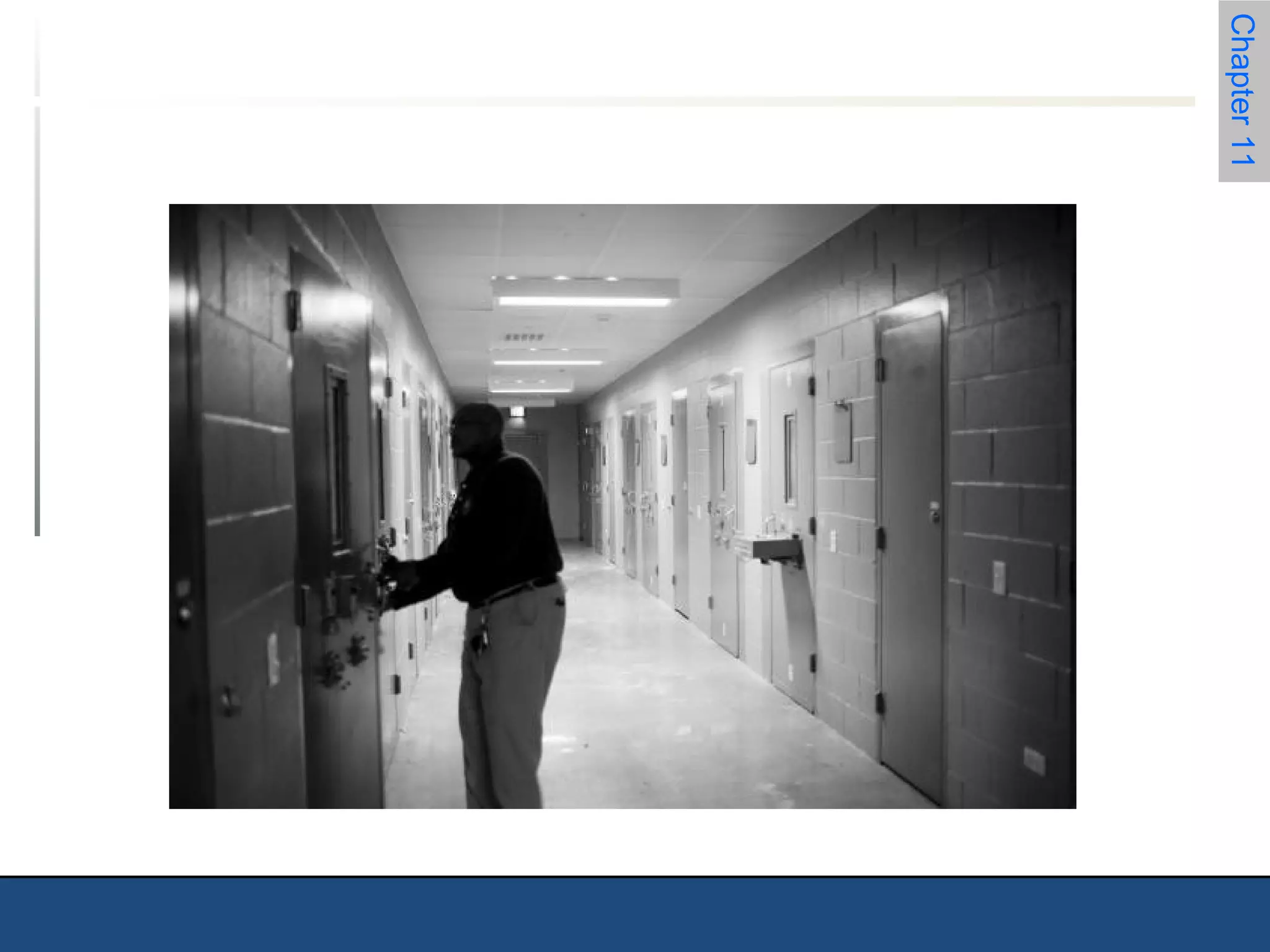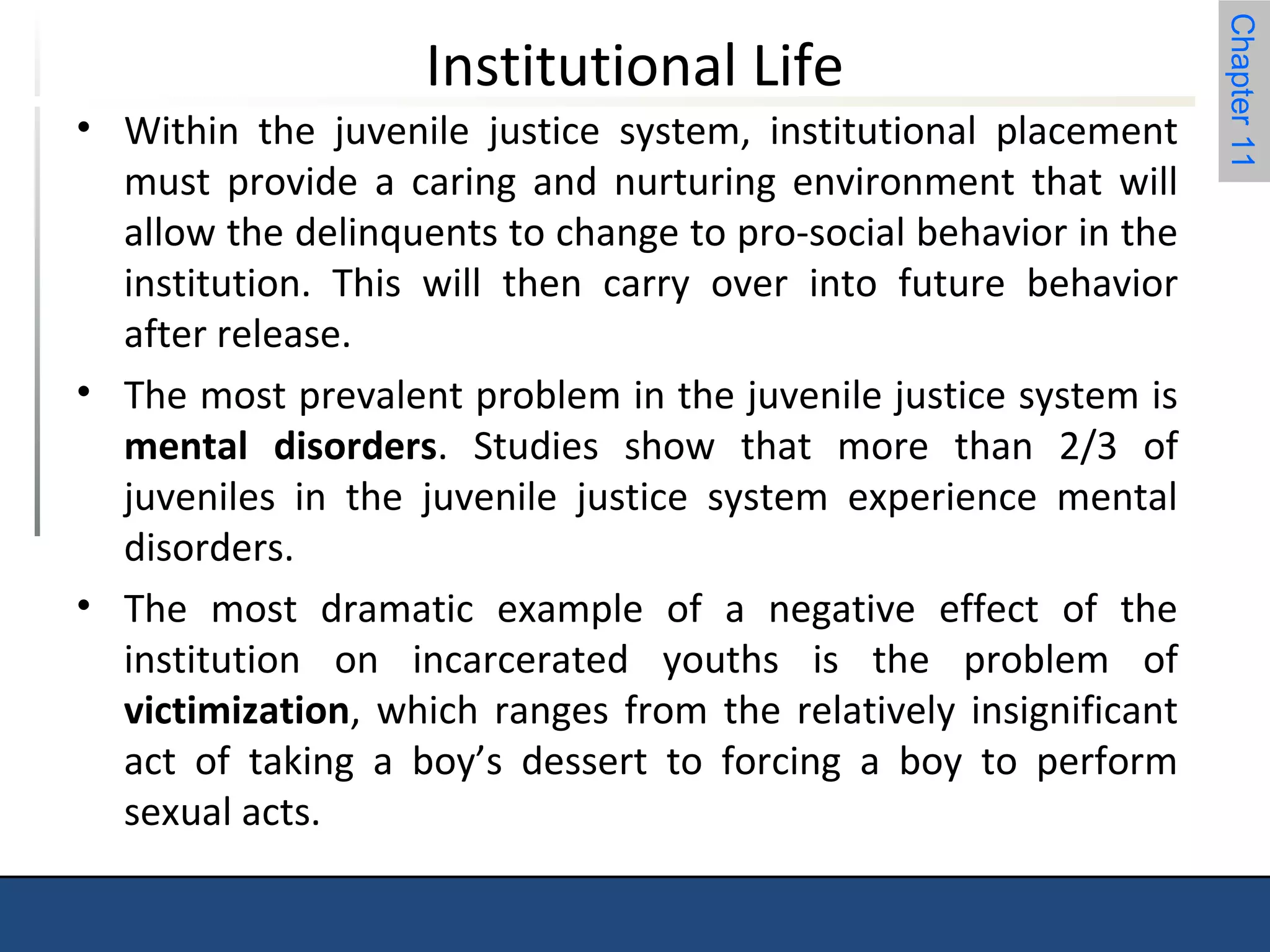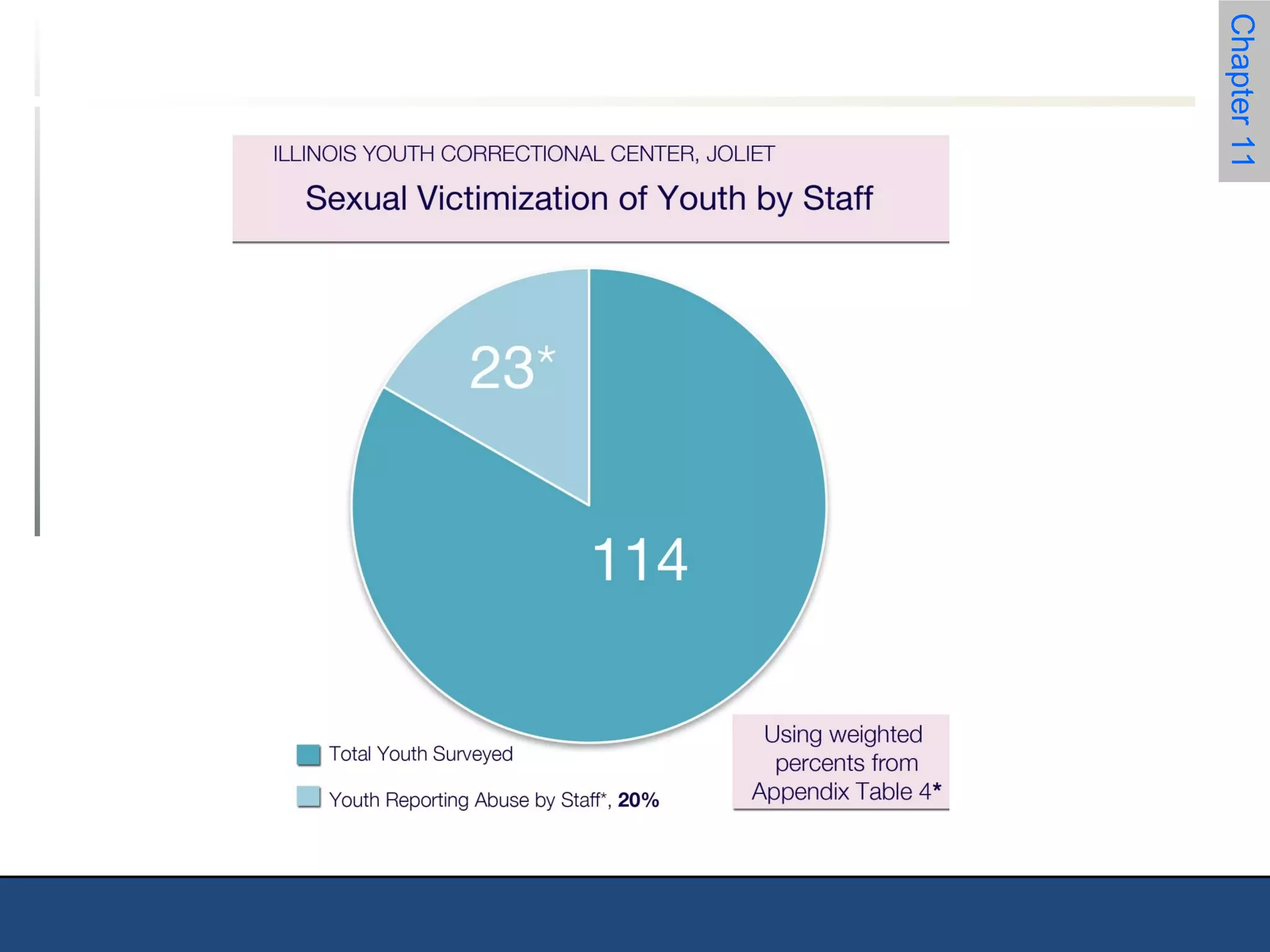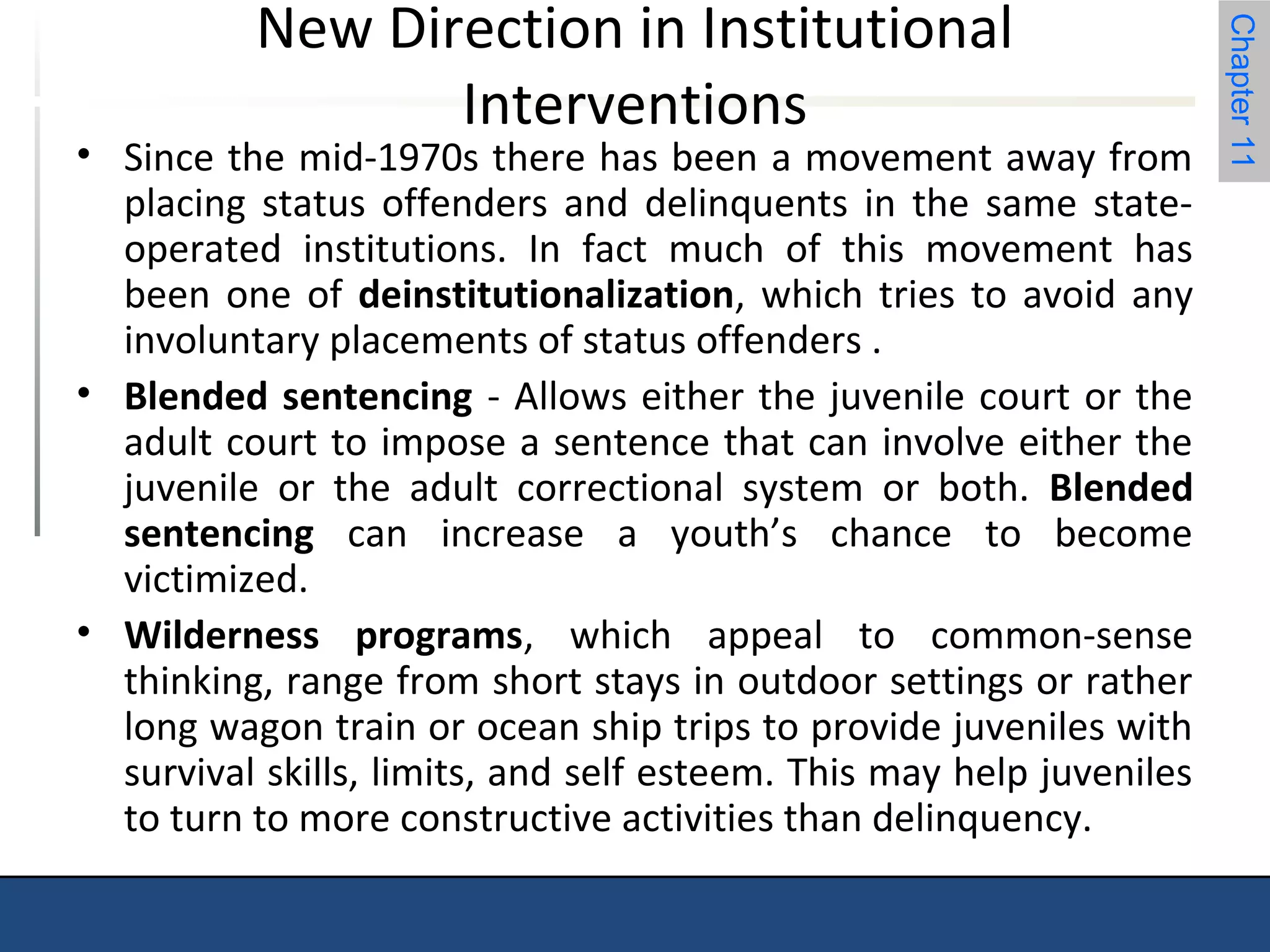This chapter discusses institutional and residential interventions for juvenile offenders. Over 81,000 juvenile offenders were placed in detention facilities in 2008. Boot camps aim to provide discipline but do not reduce recidivism. The most prevalent issue is the presence of mental disorders in over 2/3 of juvenile offenders. Effective programs have been shown to significantly reduce recidivism while ensuring youths receive needed treatment and services.
